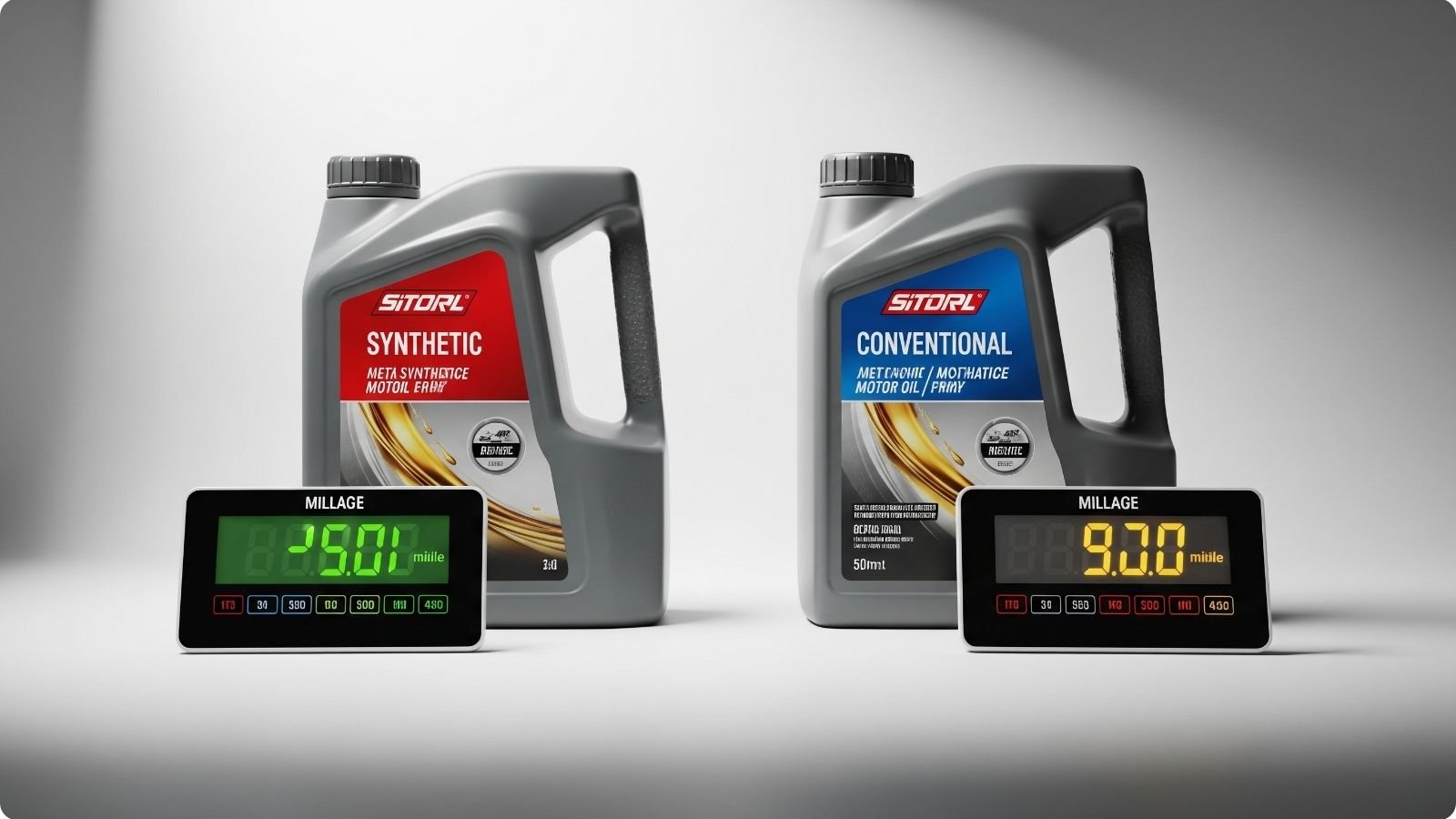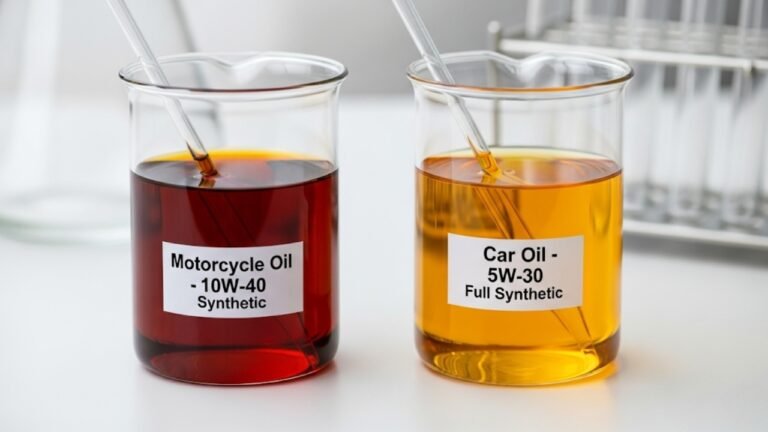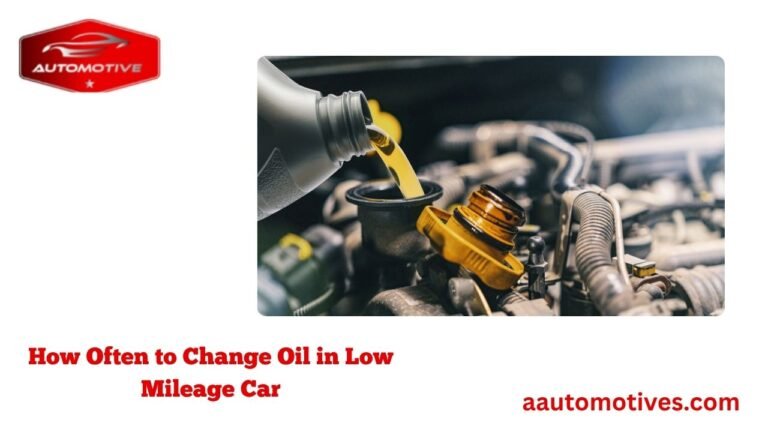Synthetic vs. Conventional Motor Oil: Compare Mileage Before Oil Changes

Have you ever stood in the car aisle, wondering whether synthetic or conventional motor oil is better for your vehicle? It’s a dilemma that many car owners face, especially when you’re trying to squeeze the most miles between oil changes without damaging your engine. What makes this more interesting is that an experiment is to be conducted to see whether the mileage before an oil change is needed is truly the same for both oil types.
But here’s the catch—some factors influence how often oil changes are needed. Car age, for instance, is already known to affect oil change frequency. Meanwhile, car size, surprisingly, doesn’t play a role. So how do we get accurate results? The answer lies in a smart experimental technique called blocking.
In this article, I’ll guide you through what this experiment could look like, why blocking matters, and how we can ensure the results are reliable. We’ll dive into personal stories, relatable analogies, and clear explanations. So, buckle up!
Understanding the Basics: Synthetic vs. Conventional Oil

Conventional Motor Oil:
-
Made from refined crude oil.
-
Cheaper than synthetic oil.
-
Works well in older cars or simple engines.
-
Needs more frequent changes.
Synthetic Motor Oil:
-
Chemically engineered for consistency.
-
Offers better performance in extreme temperatures.
-
Costs more upfront but can last longer.
-
Perfect for modern, high-performance engines.
So the question is, does synthetic oil really let you go longer between oil changes compared to conventional oil? That’s what this experiment is trying to find out.
What Is Blocking in an Experiment?
Think of blocking like splitting your laundry before washing. You wouldn’t wash whites with darks, right? That’s because you want each group to be treated fairly, without outside interference. In the same way, blocking in an experiment helps separate the influence of a known variable (like car age) so it doesn’t mess up the results.
In scientific terms, blocking is used to control variation from nuisance variables—those factors we’re not testing but still matter.
In this case:
-
Car age affects how often oil needs to be changed.
-
So we use car age as a block.
-
That way, we compare synthetic vs. conventional oil fairly within each age group.
Why Car Age Matters But Car Size Doesn’t

However, car age changes everything.
Let’s say you have:
-
A new car with a clean engine and high-tech oil systems.
-
An old car with worn-out parts and leaky gaskets.
The older car might burn oil faster or trap more contaminants. That means comparing synthetic and conventional oil without separating new and old cars would be unfair.
A Real-Life Analogy
Imagine you’re comparing two types of coffee: regular and decaf. But some people drink coffee with sugar and others without. If you don’t block for sugar preferences, your taste test results are useless. Similarly, if we don’t block by car age, we won’t know if motor oil type is truly making the difference in mileage.
How Blocking Would Be Used in This Experiment
Let’s build the experiment step-by-step.
Step 1: Define the Variables
-
Response Variable: Mileage before oil change is needed.
-
Main Treatment Variable: Type of oil (synthetic vs. conventional).
-
Blocking Variable: Car age (new vs. old).
Step 2: Form the Blocks
We split cars into two groups:
-
Block 1: New Cars
-
Block 2: Old Cars
This ensures that every oil type is tested within each car age group, making the comparison fair and accurate.
Step 3: Random Assignment Within Each Block
In each block, assign cars randomly to either:
-
Receive synthetic oil
-
Or receive conventional oil
Step 4: Collect Mileage Data
Track how many miles each car drives before needing an oil change. Compare results within each block and then analyze the differences.
Example of Blocked Experimental Design
| Car Age | Oil Type | Mileage Before Oil Change |
|---|---|---|
| New | Synthetic | 7,500 miles |
| New | Conventional | 5,000 miles |
| Old | Synthetic | 6,000 miles |
| Old | Conventional | 4,000 miles |
This table shows why blocking by car age helps. Without this separation, we might assume synthetic oil always lasts 7,500 miles, even in older engines—which just isn’t true.
Bullet Points: Key Takeaways So Far
-
Synthetic and conventional motor oil differ in longevity and performance.
-
The experiment compares mileage before oil change for both oil types.
-
Car age is a confounding variable, so we use it for blocking.
-
Car size doesn’t affect oil change frequency, so we don’t block it.
-
Blocking improves accuracy by controlling hidden bias.
The Science of Mileage and Oil Wear
Here’s where it gets a little nerdy—but fun. Motor oil works like blood for your engine. Over time, it collects dirt, metal shavings, and heat damage. Once it loses its viscosity, it’s time for a change.
Now, synthetic oil resists breakdown better than conventional oil. But how much longer does it last? That’s exactly what this experiment aims to uncover—with blocking helping filter out unrelated noise.
Why Blocking Is Better Than Just Randomizing Alone
Some people argue that random assignment is enough. But if car age affects the results, randomizing without blocking can still lead to misleading conclusions.
Here’s why:
-
Random groups might end up with more old cars in the conventional oil group.
-
That skews the mileage downward, even if synthetic isn’t truly better.
-
Blocking ensures that both oil types are tested evenly across car ages.
So, blocking improves fairness, like separating athletes by weight class before a boxing match.
The Emotional Side: Why This Matters to Everyday Drivers
Let me tell you a story.
My uncle drives a 2009 Toyota Corolla. It’s seen better days, but he swears by conventional motor oil because “it’s cheaper, and the car’s already old.” I used to think he was being stubborn until I started reading up on oil studies and realized—he might be right for his car.
Meanwhile, my cousin just bought a brand-new hybrid SUV and wouldn’t dream of using anything other than synthetic oil. Her vehicle’s manual even recommends it for extended engine life and fuel efficiency.
This experiment—where automobile motor oil is either synthetic or conventional—isn’t just a lab exercise. It’s something we all live out in our garages, driveways, and during our weekend oil changes. Blocking by car age means the data reflects these real-world nuances and helps both my uncle and cousin make better choices.
Statistical Strength: Blocking Improves Experimental Validity
Let’s bring in some scientific juice.
In any controlled experiment, variance is the enemy. Blocking helps reduce variance caused by known factors—in this case, car age. Here’s why this is critical:
-
More accurate averages: You’ll know if synthetic truly outperforms conventional within both car age groups.
-
Smaller error margins: With less “noise” from age-related wear, differences in mileage can be more confidently attributed to oil type.
-
Greater reproducibility: Other researchers can replicate your findings by using the same blocks.
This isn’t just a better experiment—it’s the right way to do it when a confounding variable is already identified.
How Not Blocking Can Mislead Results
Let’s say we ignored blocking.
You test 100 cars, mix old and new, and assign them randomly to synthetic or conventional oils. But oops—65% of the cars in the synthetic group turn out to be newer, while 70% in the conventional group are older.
What happens?
-
Synthetic oil appears to perform better.
-
But maybe that’s because most of those cars were newer.
-
That’s called confounding bias—when the real reason for a result is hidden behind another variable.
Blocking removes that bias by making sure each oil type is tested fairly across both new and old cars.
Other Examples Where Blocking Helps
Blocking isn’t just for car experiments. It’s a powerful method used in other fields too:
-
In agriculture: Blocking by soil type when comparing fertilizers.
-
In medicine: Blocking by age or gender when testing new drugs.
-
In education: Blocking by student ability when evaluating teaching methods.
In each case, blocking ensures that the experiment’s results reflect what you’re actually testing, not background noise.
So if you’re running an oil study, trust me—blocking by car age is the golden key.
Real World Advice: What This Means for You
Okay, so you’re not a scientist. You’re just trying to decide if synthetic is worth the extra bucks.
This experiment, when done right with blocking, could offer you data that applies directly to your specific car situation. If the study shows synthetic oil lasts 2,500 more miles on average in new cars but only 500 miles more in older ones, that’s powerful info.
Here’s how you could use it:
-
New car? Go synthetic. You’ll get more miles, fewer oil changes, and better engine protection.
-
Older car? Conventional might be fine. Especially if your engine doesn’t benefit much from the added life of synthetic oil.
Frequently Asked Questions (FAQs)
1. What is the main keyword in this study?
The main keyword is: automobile motor oil is either synthetic or conventional. The experiment seeks to compare their effectiveness in terms of mileage before an oil change is needed.
2. What is a blocking variable and why is car age used?
A blocking variable is one that could impact the results but isn’t the focus of the study. Car age is used because it affects oil change frequency. Blocking for it improves result accuracy.
3. Why isn’t car size used for blocking?
Because previous studies show car size has no significant impact on how often oil needs to be changed. So there’s no need to block for it.
4. Can I use this experiment to choose the right oil for my car?
Yes! If designed correctly, it can provide data relevant to your situation, especially if your car is clearly in the new or old category.
5. How does blocking make the experiment more reliable?
Blocking ensures that both treatments (synthetic and conventional oil) are tested under the same conditions, so results are not skewed by factors like car age.
6. What if I have a mid-age car?
Great question! The study can also introduce a third block for mid-age cars, or classify by mileage ranges, such as under 50,000 miles, 50,000–100,000, and over 100,000.
7. Is this kind of blocking expensive or time-consuming?
Not really. It just requires organizing your sample better. The added effort leads to more valuable insights.
8. Would blocking help in other car-related studies?
Absolutely. Blocking can improve any car maintenance study where outside variables (like climate, usage, or terrain) could skew results.
Conclusion: Better Testing Means Better Driving Decisions
Choosing between synthetic and conventional motor oil may seem like a simple task—but it has real financial and mechanical consequences. That’s why an experiment comparing these two must be carefully designed.
By blocking by car age, we ensure that the results aren’t biased or misleading. It helps you and thousands of other drivers understand exactly how long each oil lasts—based on your car’s actual condition.
Whether you’re a car enthusiast, a weekend DIY oil-changer, or someone just trying to make smarter choices, this kind of data can save you time, money, and even extend your engine’s life.
So next time someone asks, “Which oil is better?” you can say, “Depends on the age of the car—and if the experiment used blocking properly!”






